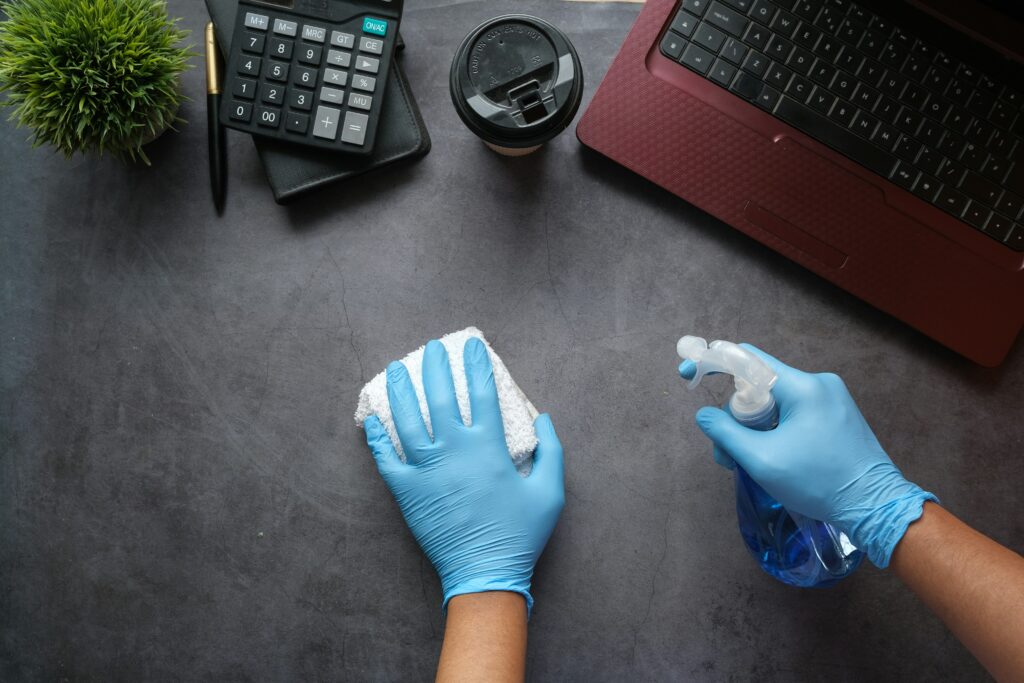Wooden furniture and accessories can add elegance and warmth to any home but are especially vulnerable to rain and humidity. In Singapore’s tropical climate, intense heat and high humidity can cause wood to warp, crack, and swell. This is particularly a concern for those living in HDB flats where environmental control can be more challenging.
Whether you have wooden furniture, floors, or decor, these tips will help preserve the quality and appearance of your wooden items for years to come.
- 1. Keep Wooden Items Away from Direct Windows
- 2. Use Dehumidifiers in Humid Areas
- 3. Apply Wood Sealant or Finish
- 4. Use Wood-Specific Cleaning Products
- 5. Ensure Proper Ventilation in Rooms with Wooden Items
- 6. Use Furniture Covers for Extra Protection
- 7. Control Room Temperature with Air Conditioners
- 8. Store Wooden Items in Dry Areas
- 9. Use Silica Gel or Moisture Absorbers
- 10. Regularly Inspect Your Wooden Items for Damage
1. Keep Wooden Items Away from Direct Windows
One of the easiest ways to protect your wooden furniture from rain and humidity is by avoiding direct exposure to windows, especially those that don’t have sufficient covering. Wood is naturally sensitive to temperature and humidity fluctuations, which are more pronounced when exposed to outdoor elements.
What You Can Do:
- Rearrange furniture to keep wooden items away from windows or areas where moisture may seep in.
- Install curtains or blinds to prevent direct sunlight or rain from hitting the wooden surfaces.
Creating a physical barrier between your wooden items and windows reduces the risk of rain or excessive sunlight, causing the wood to warp or discolour.
2. Use Dehumidifiers in Humid Areas
Singapore’s tropical climate means high humidity levels year-round. High humidity can cause wood to absorb moisture, which leads to swelling, warping, and eventually damage. In areas like kitchens or bathrooms, which often experience higher humidity, it’s essential to keep the air dry to protect wooden items.
What You Can Do:
- Invest in dehumidifiers to reduce excess moisture in your home. Place them in rooms with wooden furniture or flooring.
- Open windows occasionally to allow airflow, which helps reduce moisture buildup.
Controlling humidity can help prevent wood from absorbing excess moisture and avoid issues like warping and mildew growth.
3. Apply Wood Sealant or Finish
Applying a wood sealant or protective finish to your wooden furniture is an excellent way to shield it from environmental factors like humidity and rain. Sealants create a protective layer on the wood, making it more moisture-resistant.
What You Can Do:
- Use a polyurethane sealant or wax finish on wooden surfaces, especially those exposed to more wear and tear.
- Apply the finish in thin layers and allow sufficient drying time between coats for the best results.
A high-quality finish can act as a barrier to moisture, preventing the wood from absorbing rain or humidity and keeping it smooth and intact.

4. Use Wood-Specific Cleaning Products
Many traditional cleaning products can damage wood surfaces, stripping them of their protective layers and making them more susceptible to moisture and humidity. To avoid this, use wood-specific cleaning products to protect and nourish your wooden items.
What You Can Do:
- Opt for wood polish or cleaners that are designed for use on wooden surfaces. These products often contain ingredients that help to preserve the wood’s natural finish and protect it from moisture.
- Avoid using abrasive sponges or harsh chemicals that can damage the finish.
Choosing the right products for wood maintenance will ensure that the surface remains well-protected from humidity and daily wear.
5. Ensure Proper Ventilation in Rooms with Wooden Items
Proper ventilation is essential in maintaining a comfortable and healthy environment for wooden furniture. Without sufficient airflow, moisture can accumulate, increasing the risk of humidity-related damage to your wood.
What You Can Do:
- Ensure your living areas, especially those with wooden furniture, are well-ventilated by opening windows or installing ventilation fans.
- Consider installing air vents in rooms like kitchens and bathrooms where high humidity levels are common.
Improving airflow reduces the chances of moisture buildup and protects your wooden items from damage.
6. Use Furniture Covers for Extra Protection
Furniture covers are essential if your wooden furniture is exposed to outdoor elements (such as balconies or patios). These covers shield your furniture from rain, dust, and humidity, keeping the wood in top condition.
What You Can Do:
- Use water-resistant covers for outdoor wooden furniture or pieces kept near windows.
- Ensure the covers are breathable to prevent moisture buildup underneath.
Furniture covers act as a protective shield, preventing moisture from seeping into the wood and keeping it dry and safe from the elements.

7. Control Room Temperature with Air Conditioners
Another way to protect your wooden items from the damaging effects of humidity is by controlling the temperature in your home. Wood can contract and expand when the temperature fluctuates too much, leading to cracks or warping.
What You Can Do:
- Use air conditioners to maintain a consistent temperature and lower humidity levels, especially in high-humidity seasons.
- Keep the air conditioning moderate to avoid excessive dryness or sudden temperature changes.
Controlling the environment with air conditioning helps preserve the stability of wooden items and prevents them from expanding or contracting due to temperature changes.
8. Store Wooden Items in Dry Areas
If you’re storing wooden items temporarily or for long periods, choosing a dry, cool location is essential. Wood can quickly absorb moisture from the air, leading to swelling, rotting, or mildew growth.
What You Can Do:
- Store wooden furniture and decor in dry, well-ventilated areas away from moisture-prone areas, such as bathrooms or laundry rooms.
- Avoid storing wooden items directly on the floor, as the ground can sometimes absorb moisture and transfer it to the furniture.
Placing wooden items in dry spaces limits their exposure to humidity and prevents potential damage over time.
9. Use Silica Gel or Moisture Absorbers
For areas particularly prone to moisture buildup, such as closets or cabinets, moisture absorbers like silica gel or activated charcoal bags can help maintain dry conditions.
What You Can Do:
- Place silica gel packets or moisture-absorbing bags in drawers, closets, or cabinets that house wooden items.
- Regularly replace or refill these moisture absorbers to ensure they continue working effectively.
These simple tools can keep moisture at bay, preventing wood from absorbing water and getting damaged.

10. Regularly Inspect Your Wooden Items for Damage
Lastly, inspecting your wooden furniture and items regularly for any signs of damage due to humidity or water exposure is crucial. Catching issues early can help you take action before the problem worsens.
What You Can Do:
- Perform visual checks every few months to identify swelling, discoloration, or warping.
- Pay special attention to areas around doors, windows, or balconies where moisture is more likely to affect your furniture.
Regular inspections will help you avoid potential issues and ensure your wooden furniture is always in good condition.
Final Thoughts
Protecting your wooden items from the detrimental effects of rain and humidity in Singapore requires a proactive approach. By implementing these simple and effective strategies, you can preserve the beauty and integrity of your wooden furniture, floors, and decor.
Whether in an HDB, condo, or landed property, these practical tips will help you create a dry, safe environment for your wooden possessions. Stay vigilant and take the necessary precautions to ensure your wood continues adding warmth and elegance to your home for many years.







